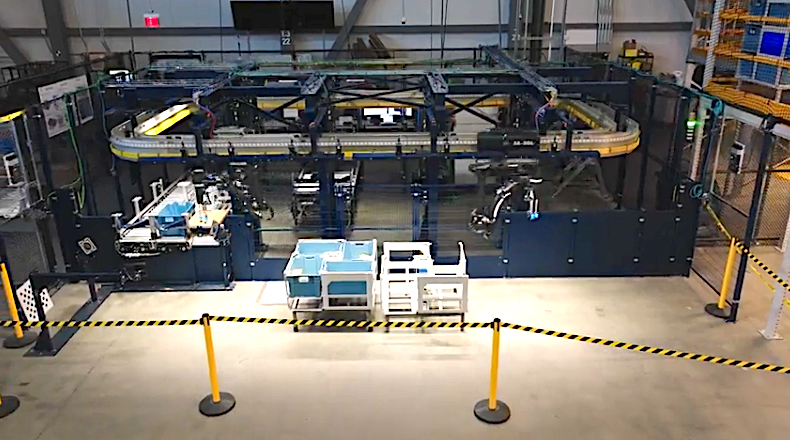Copyright usc

Quantum computing, noted Professor Daniel Lidar, has already accomplished the seemingly impossible. Unite Democrats and Republicans in Congress. With bipartisan supporters ranging from former Vice President Kamala Harris and former Representative Lamar Smith, quantum computing received $1.3 billion in basic research in 2018 and stands to receive another $2.7 billion in 2026. Lidar, director of the USC Center for Quantum Information Science & Technology, was among the featured speakers at this year’s USC Quantum Technologies Forum, a signature event between the USC Viterbi School of Engineering, USC Dornsife College of Letters, Arts and Sciences and USC Marshall School of Business. The October 28 event at USC’s Town and Gown had a similar galvanizing effect, bringing together academics, industry leaders and government officials, excited by the potential of quantum technologies to create new knowledge, jobs and applications. Quantum computers, for example, have the potential to solve incredibly complex problems — problems that might take today’s fastest supercomputers the age of the universe to solve — in a matter of days or hours. McKinsey recently reported that quantum computers’ potential to simulate molecules could “revolutionize drug discovery, development, and delivery.” USC, which, according to Lidar, is “the only university in the world with a dedicated quantum computer,” stands at the academic forefront of this movement. That machine, built by Canadian-based D-WAVE Systems, was installed at the USC Information Sciences Institute (ISI) in 2011, spurring a wave of quantum investments. Indeed, two years later, Google and NASA purchased the second D-WAVE computer. “One of the many things that drew me here was seeing that USC had smartly invested in quantum science over the last two decades,” said James Bullock, dean, USC Dornsife College of Letters, Arts and Sciences. “USC is working to train the quantum workforce of the future. We’re expanding the curriculum to meet learners where they are…Our students don’t just study quantum. They use it. They code on real platforms, work with real datasets, and build real solutions, often alongside industry mentors.” In 2024, USC became home to the first IBM Quantum Innovation Center on the West Coast, providing university researchers cloud access to IBM’s advanced quantum systems. The center, a collaboration between USC Dornsife and USC Viterbi, makes USC the only university with both their own quantum system and a major corporate quantum hub. Gaurav Sukhatme, director of the USC School of Advanced Computing, a new unit of the USC Viterbi School, noted that Southern California has long been “the nexus for pioneering technologies,” citing the Domain Name System at USC and packet switching at UCLA – both “foundational aspects of the internet.” “It feels almost like this story of innovation is being retold,” Sukhatme said about quantum computing, “and this region, with a frontier mentality, is poised to make an outside impact once again. We feel very much like we’re poised at the very center of things.” To underscore the theme of SoCal innovation, the forum also featured quantum-related leaders and students from UCLA, including multiple speakers. At the heart of the event were four panel discussions, with topics ranging from venture capital investments, industry research partnerships and training the future quantum workforce, where California is already home to one in three such jobs posted in 2024. According to Trelynd Bradley, deputy director, innovation & emerging technology, California Governor’s Office of Business and Economic Development, the Golden State is making a meaningful bet on quantum computing in 2026. “We’re going to be developing a statewide quantum strategy within the next seven to eight months for the state of California,” said Bradley, noting that $4 million in new funding for quantum research and innovation has already been earmarked as part of the state’s 2025-26 budget. “We’re on a pretty accelerated timeline,” Bradley said of the July 2026 deadline to produce a new strategy, “but our office moves at the speed of business.” The business and economics of quantum computing also took centerstage. Lidar, holder of the Viterbi Professorship in Engineering, noted that 39 public U.S. companies, including Amazon, Google, IBM, Intel and Microsoft, have ongoing quantum technologies efforts. Quantum computing hardware companies like D-WAVE, Rigetti and IonQ have gone public with $1 billion+ IPOs. And meanwhile, 466 startup or private quantum tech companies have emerged as of October 2025. Florenta Teodoridis, associate professor of management and organization at the USC Marshall School of Business, spoke on the importance of collaboration, or “co-invention,” in quantum development. “How many of you in this room are not quantum scientists?” she asked, seeing about a third of attendee hands raised. “That’s good…We can create more value if we engage in complementary innovation that generates feedback loops of ideas between producing sectors of the economy and application sectors of the economy — meaning, between quantum scientists, entrepreneurs, policymakers, established companies and so on; because we don’t know what we don’t know.” Citing the adoption of electricity, Teodoridis said: “Ideas for new applications and new economic value come to mind once scientists engage with managers (in industry) and see where we can find insights that could produce economic value today.” Private industry was well represented at the event, with speakers ranging from tech companies (Google, Amazon, Microsoft, Cisco and ServiceNow) to energy (Halliburton), pharmaceuticals (AstraZeneca), aerospace (Boeing), venture capital (Qubits Ventures) and professional services (Deloitte, PwC and Avasant). Ryan Babbush, Google’s director of quantum algorithms and applications research, credited universities for playing a critical role in quantum technologies. “(Universities) can really think about the problems we might not be encountering for seven to 10 years or something like that,” he said. “You know, there’s a lot of industry players that are highly incentivized to figure out the technology we need in the next two to three years. But we’re not thinking as much about the next seven to 10 years. We don’t have as much bandwidth to focus on that.” Published on October 31st, 2025 Last updated on October 31st, 2025



